#Giovanni Michelotti
Text




Ferrari 410 Superamerica Cabriolet, 1956, by Boano. Designed by Giovanni Michelotti and built by Carrozzeria Boano, a one-off built on a 250 GT chassis
#Ferrari#Ferrari 410 Superamerica Cabriolet#1956#Boano#Giovanni Michelotti#Carrozzeria Boano#1950s#cabriolet#open roof#one-off#tail fins
663 notes
·
View notes
Photo

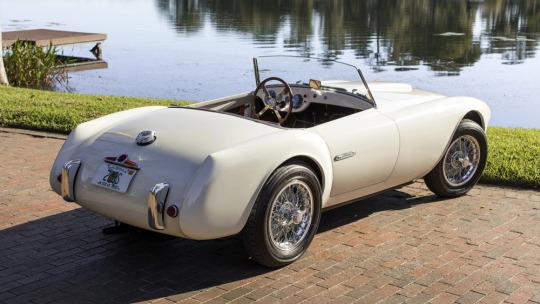


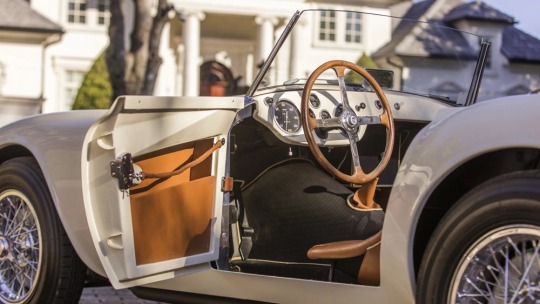
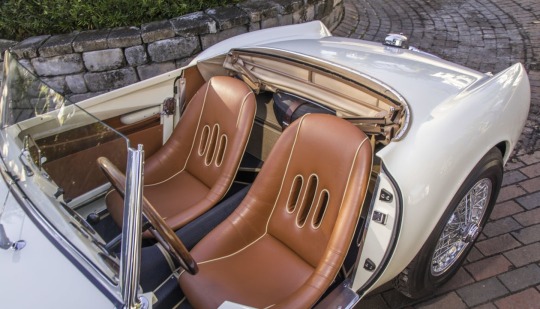
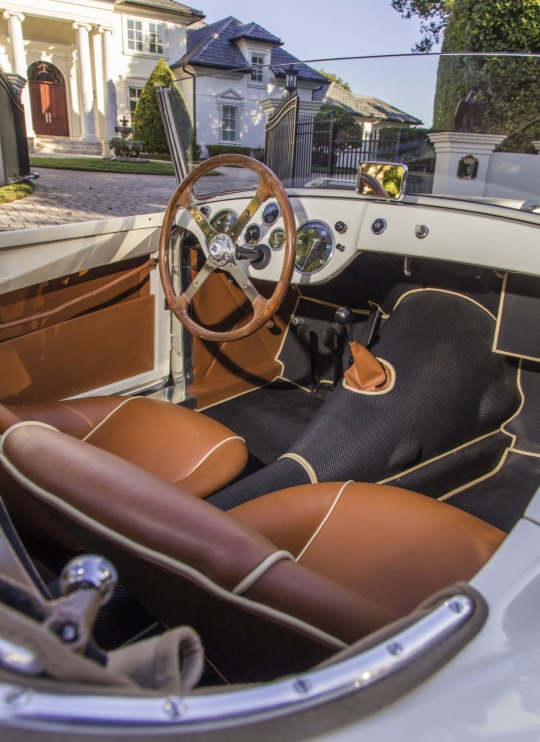
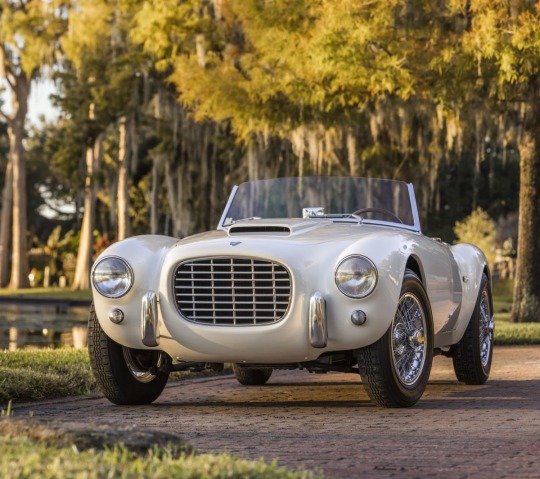


1953 Siata 208S Spider
Siata is an acronym for Società Italiana Auto Trasformazione Accessori, the Turin-based firm founded in 1926 by Giorgio Ambrosini, and which ceased production in 1970.
Much like Abarth, Siata developed its business by manufacturing performance parts for Fiat, gaining greater exposure after World War II as motorsport came back to the fore in Europe and the Americas. As 750 cc-powered race cars grew in displacement, Siata-modified vehicles gained prominence and the attention of stateside racers like Briggs Cunningham and Ernie McAfee. The latter was a Los Angeles–based importer who drove one of the first Siata-enhanced examples in the 1953 Carrera Panamericana race.
Fiat, meanwhile, had developed a 2.0-liter V-8 engine for its luxury sports car, the Otto Vu. While only 49 examples of that model were constructed, there remained additional Fiat V-8 engines that were acquired by Siata to power its new 208S Spider, unveiled in 1952. Only 33 examples were bodied by Carrozzeria Rocca Motta, of Turin, from 1953 to 1955. The car was not only powerful for its day, but supremely beautiful.
Designed by Giovanni Michelotti, these perfectly proportioned roadsters defined the iconic look of the era’s rugged sports cars. Equally stunning was the 208 CS, a coupe version of which only 18 were made, 11 bodied by Balbo and seven by Stabilimenti Farina. Topped with twin Weber carburetors and tuned by Siata, Fiat’s 2.0-liter OHV alloy V-8 engine develops more than 125 hp at 6,000 rpm, which is good enough to give the car a top speed of nearly 125 mph.
#art#design#sportcars#sportcar#luxurycars#luxurycar#vintagecars#vintagecar#siata#fiat#italy#giorgio ambrosini#spider#1953#giovanni michelotti#roadster#208 CS#siata 208 CS
1K notes
·
View notes
Photo


BMW 2000 CS Coupe design by Giovanni Michelotti 1967. - source Cars & Motorbikes Stars of the Golden era.
91 notes
·
View notes
Photo






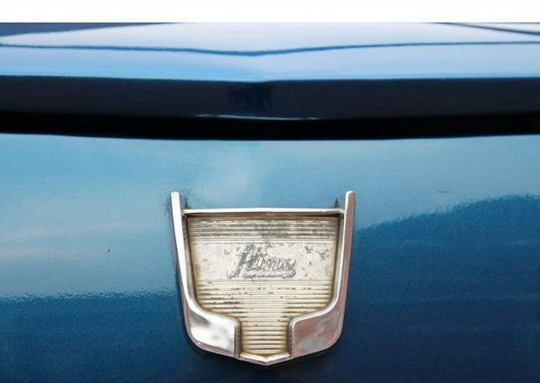



Hino Contessa 1300 Coupé
The name Hino was taken from the homonymous town in the Tokyo prefecture where the company's headquarters were (and still are). His first steps were to create powerful military vehicles for the Imperial Japanese Army during World War II. Once the greatest war of all time was over, it dedicated itself to the manufacture of diesel engines, trucks and buses. The post-war Japanese automobile industry underwent a major transformation thanks to the numerous agreements that many manufacturers made with car brands in Europe and the United States. Hino was no different. The operations were going from strength to strength, they had already earned an important place in the industry and even theirs was the first trolleybus in the history of Japan. The brand wanted to expand its business by launching into the world of passenger cars. Already under the name of Hino Motors, it signed a collaboration agreement with Renault in February 1953 and two months later they began to manufacture the Renault 4CV (also called Renault 4/4) under license. In Japan it was marketed as the Hino PA and some 35,000 units were sold in the 10 years it was in production. The French brand ceased production of the Renault 4CV in 1961, so Hino set out to take another step in the automotive world: manufacture its own car. They contacted the prolific Italian designer Giovanni Michelotti, who had worked with brands as relevant as Ferrari, Lancia, Maserati, Alpine or Triumph, to draw the silhouette of the new Japanese car.
The Hino Contessa 900 used the base of the Renault 4CV but at first glance no one could recognize that link due to the charming sedan body designed by the Turin designer. Renault's 35 hp 0.9-litre engine was positioned at the rear and was sufficient to animate the rear axle with the 750 kg that the car weighed. Shortly after, the Hino Contessa 900 Sprint was launched, a coupe version that reduced the weight by 100 kg and had an engine powered by Nardi up to 45 CV. With an attractive design, greater habitability -it offered space for five passengers, one seat more than the 4CV- and the proven reliability of its engine, it was not surprising that the Contessa achieved good sales results. 47,299 units were marketed between 1961 and 1964, a small part of them manufactured beyond the Japanese borders. The great reception in the market of its first car encouraged Hino to develop the second generation. Once again, Michelotti was in charge of its design, who had an overwhelming personality. The front with double optics and no grille was clearly reminiscent of the Chevrolet Corvair while the general lines were similar to other models designed by Michelotti such as the Triumph 2000. The Italian designer had been inspired by the English and American cars for this Japanese model with a French engine. Long live globalization! The Hino Contessa 1300 was bigger and heavier than its predecessor, but also more powerful by using a 1.3-liter 55 hp engine from the Renault 8. It began its commercial journey in 1964 and a few months later the sports version with bodywork arrived. two-door, the Contessa 1300 Coupé with 65 CV. The second generation of the Contessa was exported to several countries around the world, being manufactured in Japan, Israel and New Zealand.
80 notes
·
View notes
Text
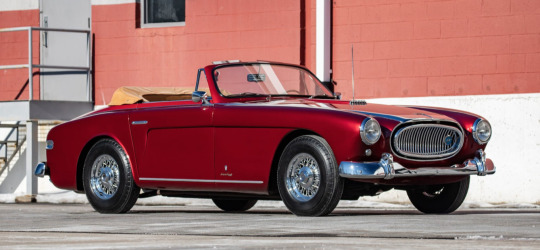
The Cunningham C-3 – A Rare American Homologation Special
6 notes
·
View notes
Text

1954 Fiat 1100 TV Abarth Allemano Coupé by Giovanni Michelotti
11 notes
·
View notes
Photo

1953 Siata 208S Spider Siata is an acronym for Società Italiana Auto Trasformazione Accessori, the Turin-based firm founded in 1926 by Giorgio Ambrosini, and which ceased production in 1970. Much like Abarth, Siata developed its business by manufacturing performance parts for Fiat, gaining greater exposure after World War II as motorsport came back to the fore in Europe and the Americas. As 750 cc-powered race cars grew in displacement, Siata-modified vehicles gained prominence and the attention of stateside racers like Briggs Cunningham and Ernie McAfee. The latter was a Los Angeles–based importer who drove one of the first Siata-enhanced examples in the 1953 Carrera Panamericana race. Fiat, meanwhile, had developed a 2.0-liter V-8 engine for its luxury sports car, the Otto Vu. While only 49 examples of that model were constructed, there remained additional Fiat V-8 engines that were acquired by Siata to power its new 208S Spider, unveiled in 1952. Only 33 examples were bodied by Carrozzeria Rocca Motta, of Turin, from 1953 to 1955. The car was not only powerful for its day, but supremely beautiful.Designed by Giovanni Michelotti, these perfectly proportioned roadsters defined the iconic look of the era’s rugged sports cars. Equally stunning was the 208 CS, a coupe version of which only 18 were made, 11 bodied by Balbo and seven by Stabilimenti Farina. Topped with twin Weber carburetors and tuned by Siata, Fiat’s 2.0-liter OHV alloy V-8 engine develops more than 125 hp at 6,000 rpm, which is good enough to give the car a top speed of nearly 125 mph.
#art#design#sportcars#sportcar#luxurycars#luxurycar#vintagecars#vintagecar#siata#fiat#italy#giorgio ambrosini#spider#1953#giovanni michelotti#roadster#208 CS#siata 208 CS
5 notes
·
View notes
Text
Gullwing America’s One-off Ferrari F-340 Competizione
Gullwing America’s One-off Ferrari F-340 Competizione
Although Gullwing America’s claim to fame was the classic Mercedes-Benz 300 SL, the company has designed other vehicles including one of our personal favorites in the Ferrari 340 Competizione. HICONSUMPTION
The interior is just as beautiful as the exterior, it will be close to the original 340 Mexico Berlineta but will feature some modern elements such as carbon fiber seats, wheeled bag, modern…
View On WordPress
#1952 Ferrari 340 Mexico Berlineta#1952 Ferrari 340 Mexico Berlinetta by Vignale#1952 Ferrari 340 Mexico Vignale Coup#1988 Ferrari Club of America Best in Show#1989 Best in Class at Pebble Beach Concours#340 America models#456 Ferrari platform#Alberto Ascari#Australian Mark Nungent#Carrera Panamericana race in Mexico#Carroll Shelby#Designed by Giovanni Michelotti for Vignale#Enzo Ferrari#Ferrari F-340 Competizione#Gullwing America#Gullwing America’s One-off Ferrari F-340 Competizione#HICONSUMPTION#Jack McAfee#Luxatic.com#RM Sotheby&039;s#Tuboscossia chassis
0 notes
Photo
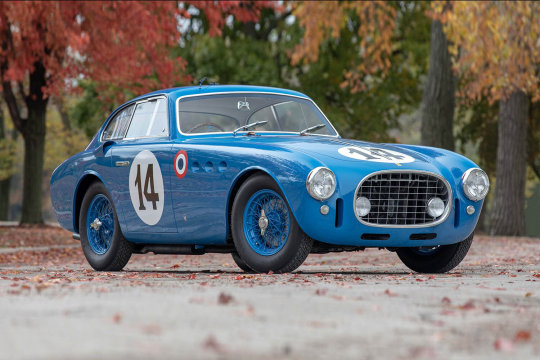
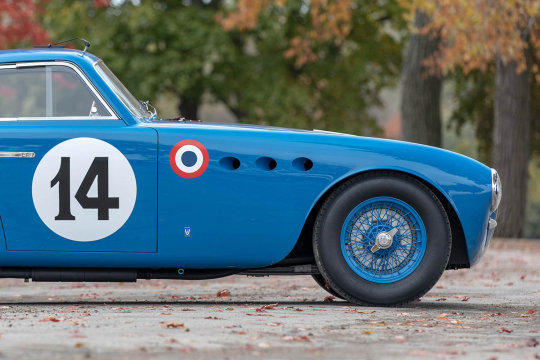
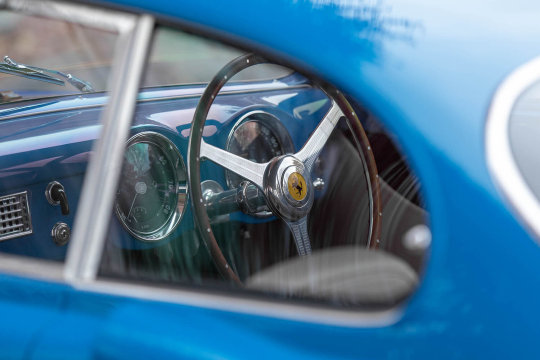

1952 Ferrari 340 America. Originally designed by Giovanni Michelotti, lead designer for Carrozzeria Vignale, finished fifth in this car at the 1952 24 hours of Le Mans
279 notes
·
View notes
Text
Swiss chapter: 1956 Fiat 1100 TV Coupé by Ghia-Aigle
We don’t know how many of these specimens were produced, but we believe, with good reason, that there are very few of them, very few.
Ghia-Aigle originally operated as a subsidiary of Carrozzeria Ghia, becoming independent in 1953 and temporarily located in Lugano (1954–58). Designers were mainly from Ghia, including Mario Boano (1948–51), Giovanni Michelotti (1948–57), and Pietro Frua…

View On WordPress
12 notes
·
View notes
Note
🏎️

Send “🏎️” for my muse to assign you a vehicle/car based on your muse.
@dontcxckitup

1967 Triumph Spitfire
"Named after the World War 2 fighter plane, the Spitfire was designed during the golden age of Italian automotive design by Giovanni Michelotti. The CC cast iron engine is specifically made by Standard Triumph for their vehicles. It's swing axel gives the wheel suspension the ability to take sharp turns and bumps. Don't judge it based on it's age, the Spitfire durable on the rockiest of journeys."
Class: Sports Car
Layout: Front Engine
Body: 2-seat drophead coupé
Engine: 1296 cc inline-four
Assembly: England
Transmission: 4 Speed
Top SpeedL 171 km/h (1106 mph)
Acceleration: 16.4 seconds
3 notes
·
View notes
Photo

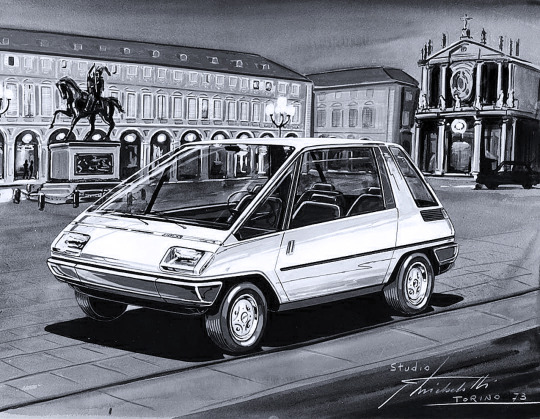
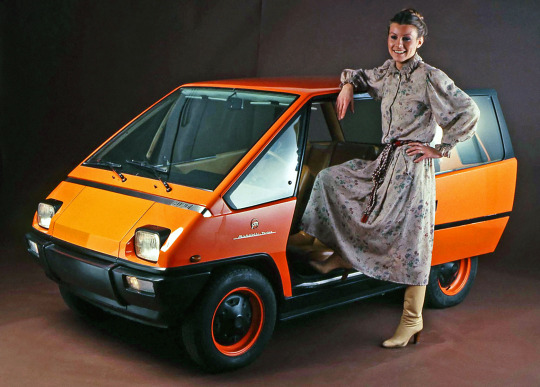


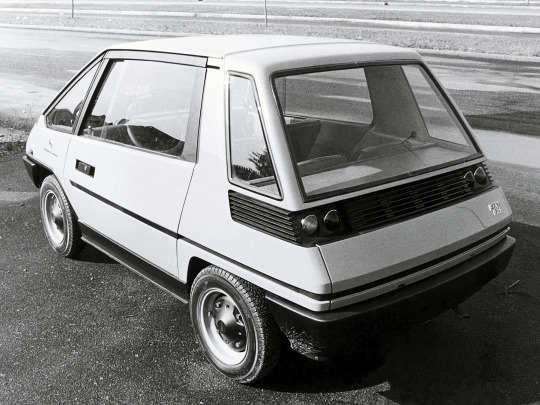
Fiat 126 Vettura Urbana, 1976, by Michelotti. Presented at the Turin Motor Show, a futuristic city-car concept based on the rear-engined Fiat 126. Despite being 26cm shorter than the 126 Giovanni Michelotti’s monobox design made room for four who accessed the interior via sliding doors
#Fiat#Fiat 126#Fiat 126 Vettura Urbana#Michelotti#Giovanni Michelotti#concept#rear engine#futuristic#1976#1970s#monobox#sliding doors#city car#design study#prototype#render
3K notes
·
View notes
Text
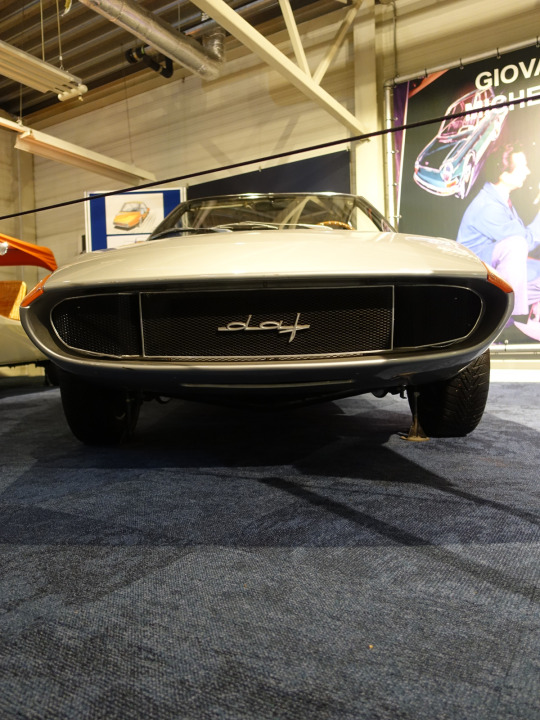
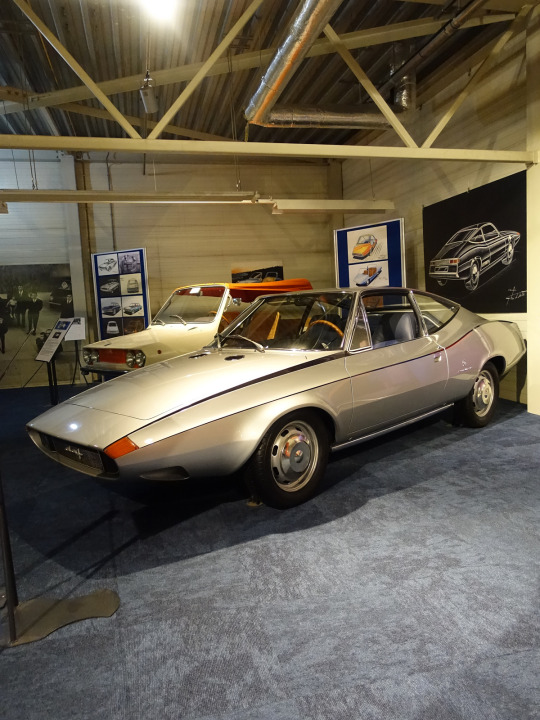

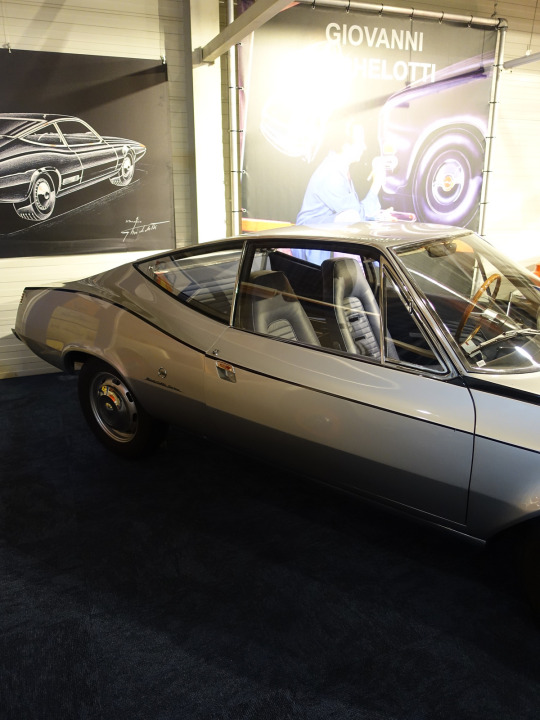

1968 DAF Siluro concept car at the DAF Museum. With 1,1L Renault engine and Variomatic. Designed by Giovanni Michelotti, shown at the Geneva Motor Show 1968.
19 notes
·
View notes
Photo
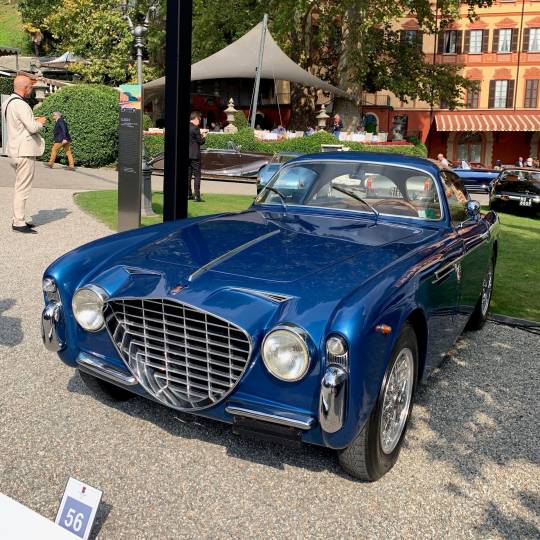
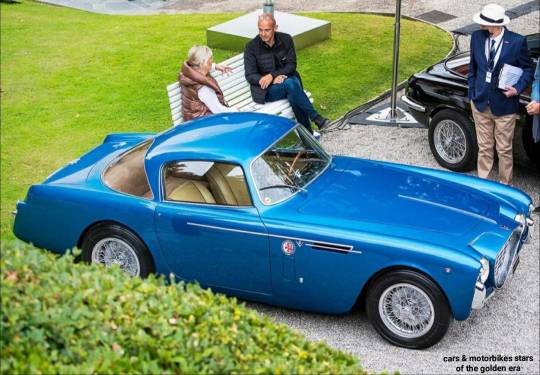


Siata 208 CS 8V Coachwork 1954 design Giovanni Michelotti pour Bertone.. - source Cars & Motorbikes Stars of the Golden era.
79 notes
·
View notes
Photo
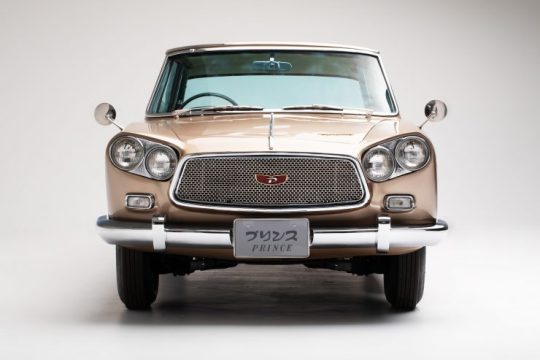
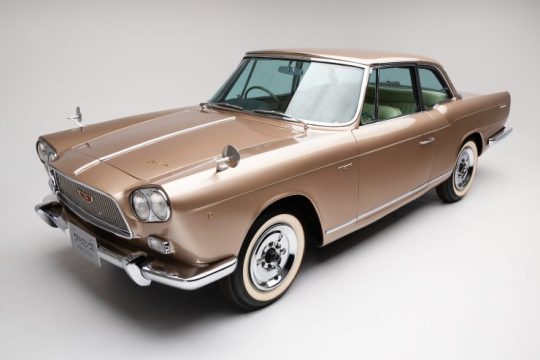
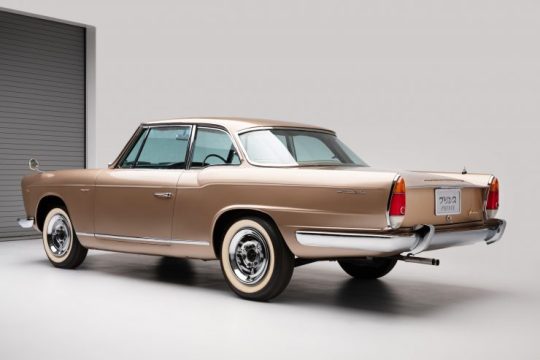




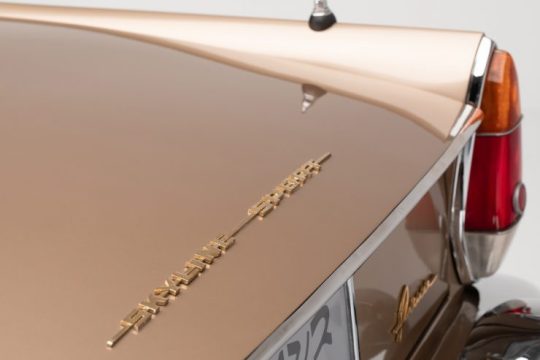
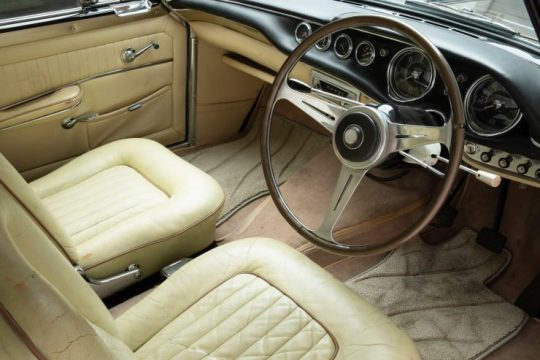

Prince Skyline Sport Coupe by Michelotti. (1 of 60).
The Prince Skyline was a car with humble beginnings that would slowly evolve into one of the most famous Japanese sports cars in the world – the Nissan Skyline and the almost universally loved Nissan GT-R.
The Skyline model range started in 1957 as a modest four-door sedan with a 1,482cc 4-cylinder engine producing 60 hp, and capable of a top speed of 87 mph. Nissan and Prince would merge in the 1960s, the Skyline was one of the Prince cars that survived – eventually becoming a major member of the Nissan stable.
One of the most famous early Skylines is the car you see here, the Skyline Sport Coupe by Michelotti. It was the work of Italian designer Giovanni Michelotti who was hired to pen the eye-catching bodywork, using the Prince Gloria as the base platform. The Gloria was the slightly larger sibling to the Skyline, with a 1.9 litre engine that offered a little more power, and a slightly larger overall footprint allowing more room inside the cabin. Michelotti used this larger platform to his advantage, creating both a luxurious coupe and a convertible, with ample interior space, canted headlights, and remarkably good visibility from inside the car thanks to the narrow pillars.
The unusual headlights weren’t actually that unusual at the time, they’d been used by cars built by automakers like Chrysler, Bentley, and Ferrari. Michelotti would go on to use a somewhat similar headlights design again on the Triumph Vitesse in 1962.The early 1960s were a time of rapid change in the automotive world, with many car makers competing to create and establish new design language for the new decade. It was a forward-thinking move by Prince to hire Michelotti at the beginning of the decade to design them a new body, at the same time giving the brand the significant image boost that comes with the hiring of a well-known Italian designer.
Under the hood, the Prince Skyline Sport Coupe used the same 91 hp 1.9 litre engine as the Gloria, so performance was sedate rather than aggressive. The transmission is a 4-speed manual column-shift, and power is sent back to a live axle rear end.
Over the course of the model’s very limited production run, only approximately 60 examples of Michelotti’s Skyline were built. Despite their relative rarity, they were a common sight in Toho films of the early 1960s – largely because Prince had a very proactive (and very successful) PR team who were adept at getting their cars used in films.
#Prince Skyline Sport Coupe#Nissan Skyline#Nissan GT-R#Giovanni Michelotti#Prince Gloria#chrysler#Bentley#Ferrari#Triumph Vitesse
97 notes
·
View notes
Text




Borrow from Classic & Recreation Sportscars FB;
“Abarth 205 Monza is a sports racing coupe designed by Giovanni Michelotti and built by Carlo Abarth in the early 50’s and followed on from the failure of Cistalia in 1949.
Built based upon a box frame chassis with aluminium bodywork by Alfredo Vignale, powered by a tuned Fiat 4-cyl 1089cc (80hp) engine with a 4-speed manual transmission.
Three vehicles were produced with the last one in 1951 displayed at the Turin Auto Show with a larger 4-cyl 1187cc engine. Unfortunately high sales price competed with the new 2.6litre V12 Ferrari 212.”
7 notes
·
View notes